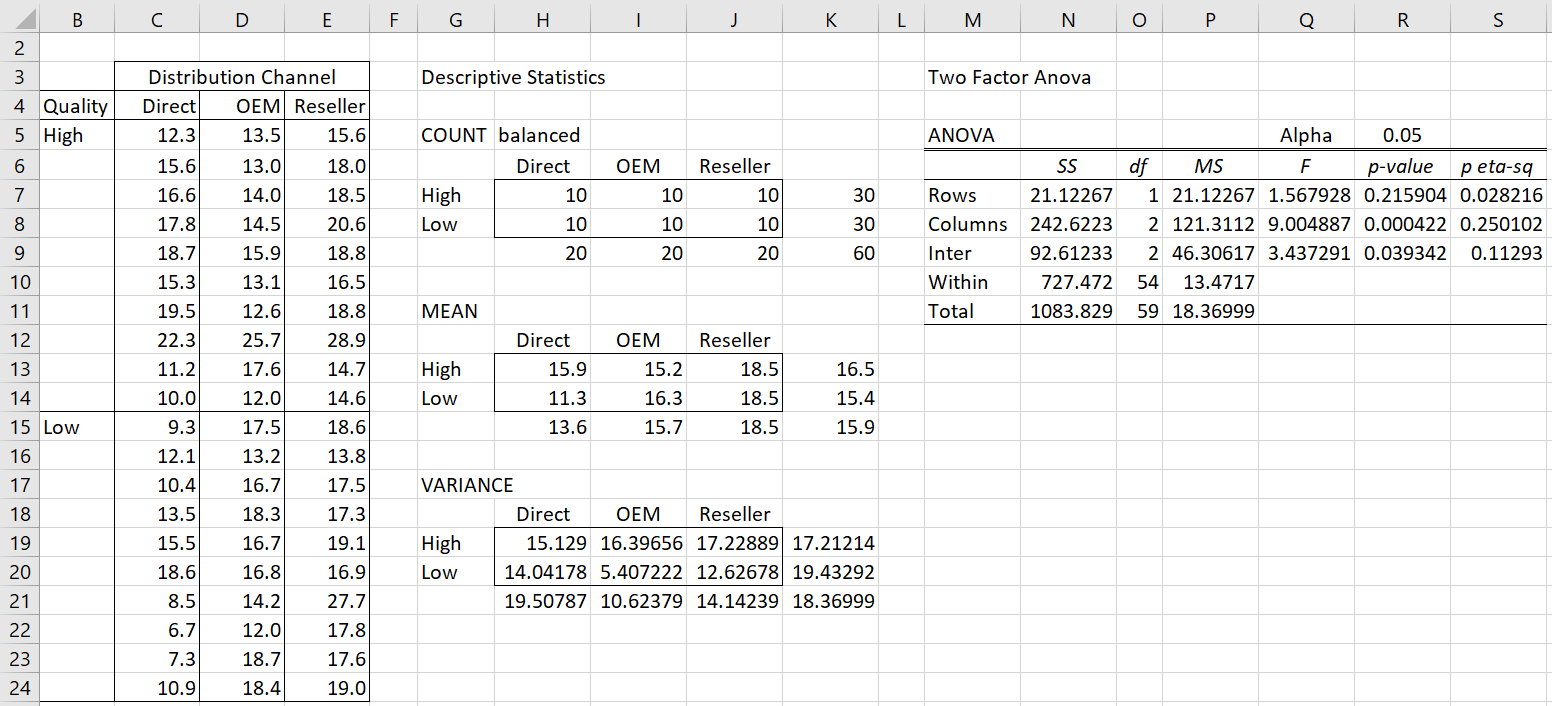

- Two way anova in excel example how to#
- Two way anova in excel example install#
- Two way anova in excel example plus#

Summary(glht(res.aov2, linfct = mcp(dose = "Tukey"))) Use glht() to perform multiple pairwise-comparisons: library(multcomp) Multiple comparisons in ANOVA models are specified by objects returned from the function mcp().

lincft(): a specification of the linear hypotheses to be tested.model: a fitted model, for example an object returned by aov().The simplified format is as follow: glht(model, lincft) glht stands for general linear hypothesis tests. It’s possible to use the function glht() to perform multiple comparison procedures for an ANOVA. Multiple comparisons using multcomp package It can be seen from the output, that all pairwise comparisons are significant with an adjusted p-value < 0.05. p adj: p-value after adjustment for the multiple comparisons.lwr, upr: the lower and the upper end point of the confidence interval at 95% (default).diff: difference between means of the two groups.Therefore, the Tukey HSD test will be done only for the factor variable “dose”. We don’t need to perform the test for the “supp” variable because it has only two levels, which have been already proven to be significantly different by ANOVA test. The function TukeyHD() takes the fitted ANOVA as an argument. Note that, in the situation where the interaction is not significant you should use the additive model.Īs the ANOVA test is significant, we can compute Tukey HSD (Tukey Honest Significant Differences, R function: TukeyHSD()) for performing multiple pairwise-comparison between the means of groups. It can be seen that the two main effects (supp and dose) are statistically significant, as well as their interaction.
Two way anova in excel example plus#
If you think that these two variables might interact to create an synergistic effect, replace the plus symbol (+) by an asterisk (*), as follow. It makes an assumption that the two factor variables are independent. Not the above fitted model is called additive model. These results would lead us to believe that changing delivery methods (supp) or the dose of vitamin C, will impact significantly the mean tooth length. dose is the most significant factor variable. res.aov2 F)ĭose 2 2426.4 1213.2 82.81 F) corresponding to the p-value of the test.įrom the ANOVA table we can conclude that both supp and dose are statistically significant. The function summary.aov() is used to summarize the analysis of variance model. The R function aov() can be used to answer this question. We want to know if tooth length depends on supp and dose. Ggboxplot(my_data, x = "dose", y = "len", color = "supp", # Color box plot by a second group: "supp" # Plot tooth length ("len") by groups ("dose") If(!require(devtools)) install.packages("devtools")ĭevtools::install_github("kassambara/ggpubr")
Two way anova in excel example install#
Install the latest version of ggpubr from GitHub as follow (recommended): Here, we’ll use the ggpubr R package for an easy ggplot2-based data visualization. To use R base graphs read this: R base graphs. Two-way interaction plot, which plots the mean (or other summary) of the response for two-way combinations of factors, thereby illustrating possible interactions.
Two way anova in excel example how to#
In the next sections I’ll describe how to analyse data from balanced designs, since this is the simplest case.īox plots and line plots can be used to visualize group differences: We have 2X3 design cells with the factors being supp and dose and 10 subjects in each cell. Question: We want to know if tooth length depends on supp and dose. # Convert dose as a factor and recode the levels We’ll convert it as a factor variable (i.e., grouping variable) as follow. įrom the output above, R considers “dose” as a numeric variable. First, install dplyr if you don’t have it: install.packages("dplyr") # Show a random sampleĭplyr::sample_n(my_data, 10) len supp dose To get an idea of what the data look like, we display a random sample of the data using the function sample_n().


 0 kommentar(er)
0 kommentar(er)
